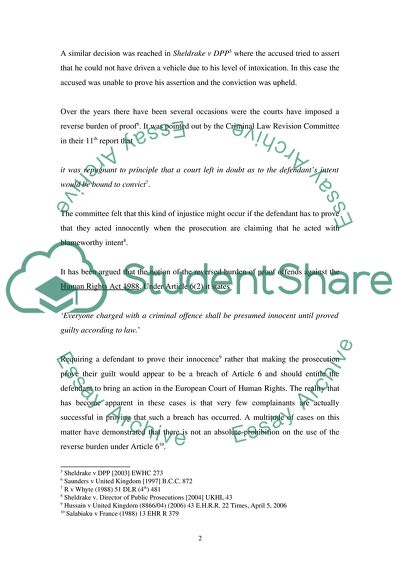Cite this document
(The Legal Burden in Criminal Proceedings in England and Wales Case Study, n.d.)
The Legal Burden in Criminal Proceedings in England and Wales Case Study. Retrieved from https://studentshare.org/law/1712472-law-of-evidence-do-you-consider-that-determining-the-allocation-of-legal-burden-of-proof-continues-to-remain-acutely-problematic-in-criminal-proceedings-in-engl
The Legal Burden in Criminal Proceedings in England and Wales Case Study. Retrieved from https://studentshare.org/law/1712472-law-of-evidence-do-you-consider-that-determining-the-allocation-of-legal-burden-of-proof-continues-to-remain-acutely-problematic-in-criminal-proceedings-in-engl
(The Legal Burden in Criminal Proceedings in England and Wales Case Study)
The Legal Burden in Criminal Proceedings in England and Wales Case Study. https://studentshare.org/law/1712472-law-of-evidence-do-you-consider-that-determining-the-allocation-of-legal-burden-of-proof-continues-to-remain-acutely-problematic-in-criminal-proceedings-in-engl.
The Legal Burden in Criminal Proceedings in England and Wales Case Study. https://studentshare.org/law/1712472-law-of-evidence-do-you-consider-that-determining-the-allocation-of-legal-burden-of-proof-continues-to-remain-acutely-problematic-in-criminal-proceedings-in-engl.
“The Legal Burden in Criminal Proceedings in England and Wales Case Study”. https://studentshare.org/law/1712472-law-of-evidence-do-you-consider-that-determining-the-allocation-of-legal-burden-of-proof-continues-to-remain-acutely-problematic-in-criminal-proceedings-in-engl.


